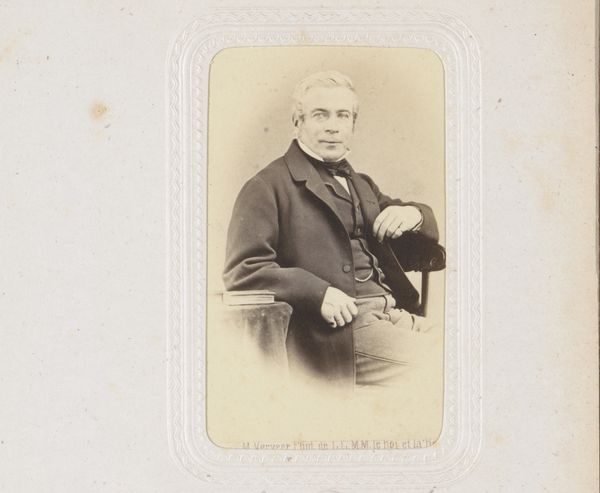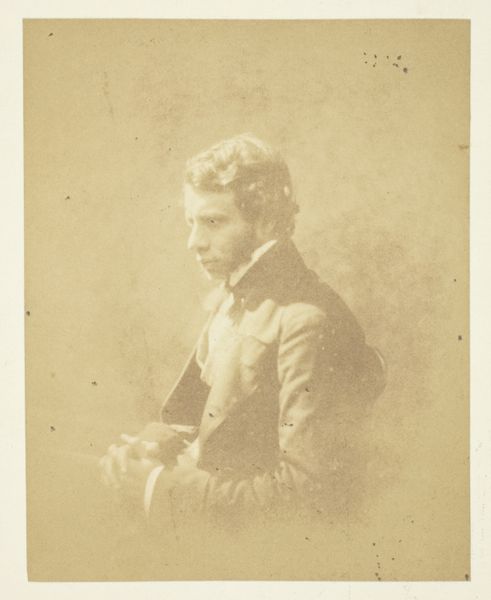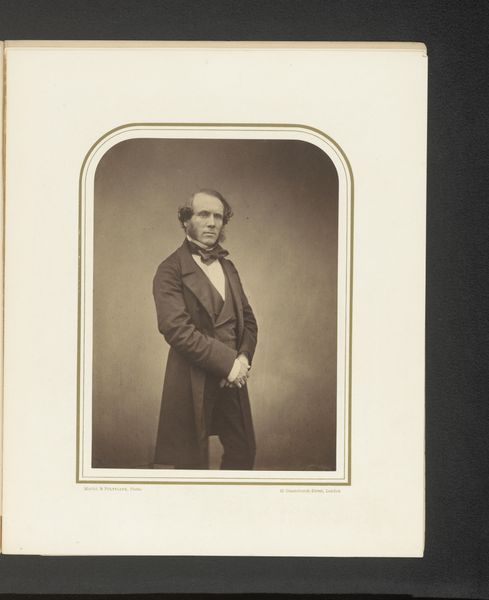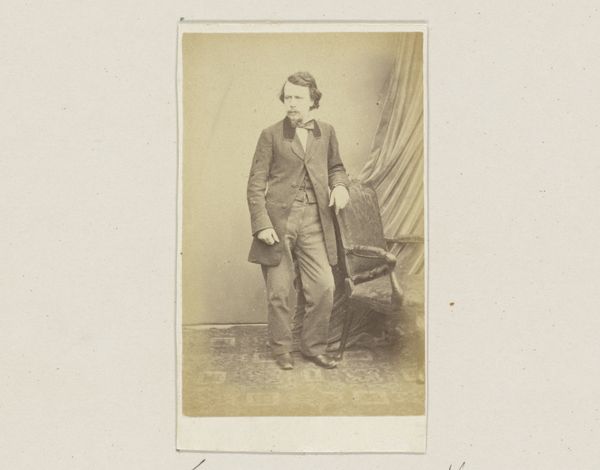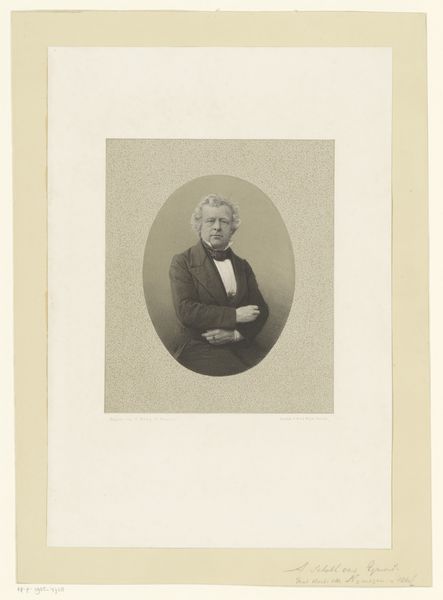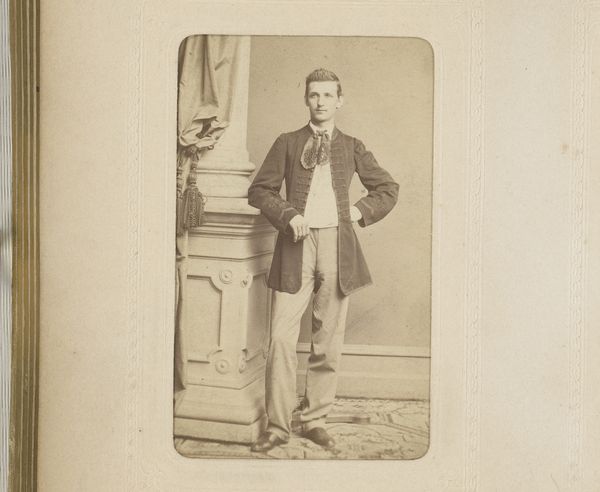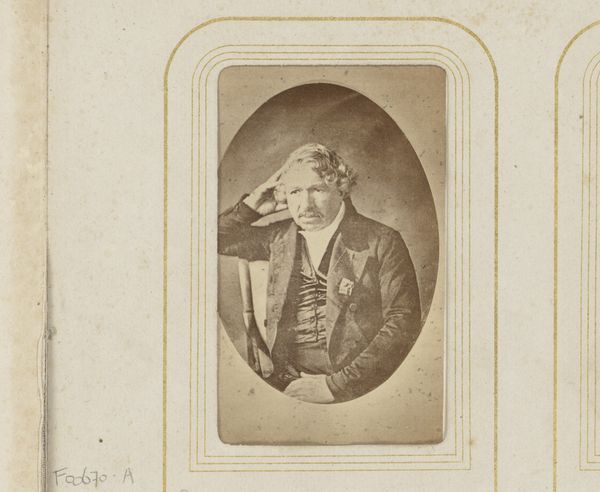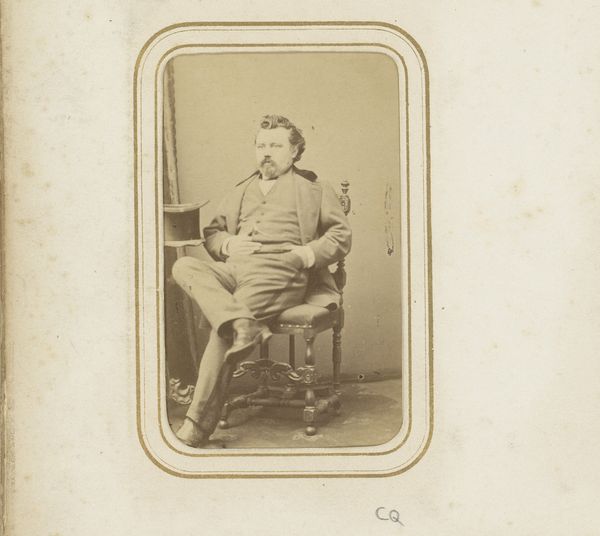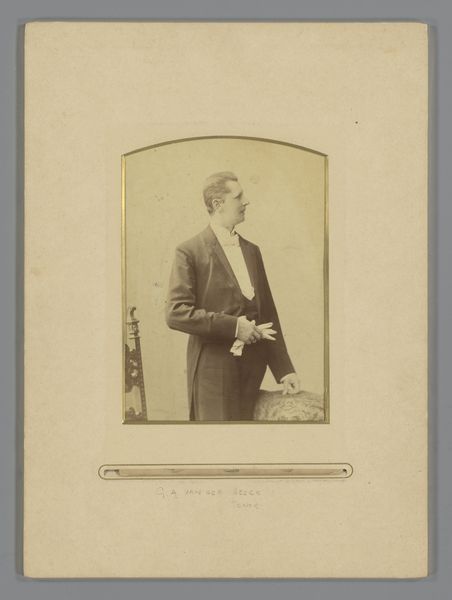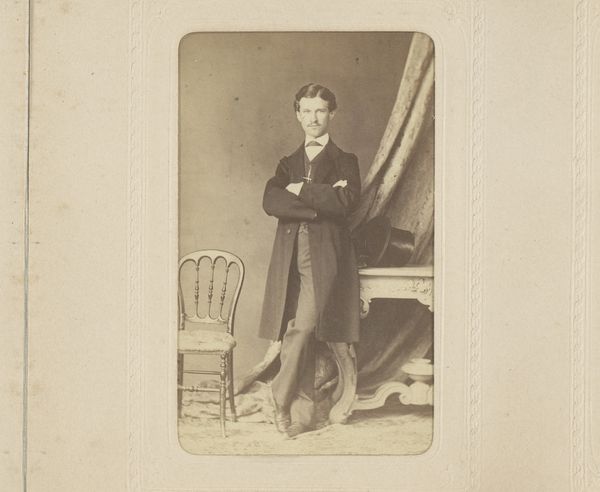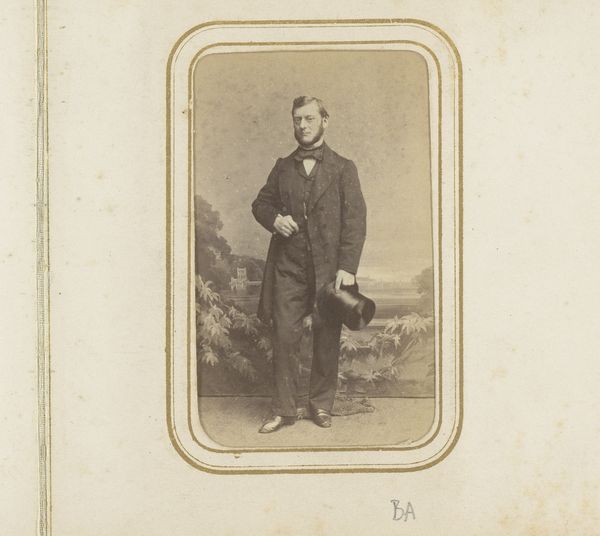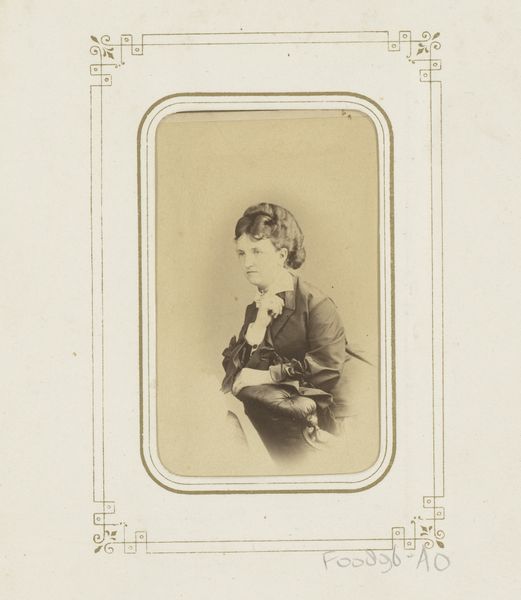
paper, photography, gelatin-silver-print, albumen-print
#
portrait
#
paper
#
photography
#
gelatin-silver-print
#
paper medium
#
albumen-print
Dimensions: height 200 mm, width 147 mm
Copyright: Rijks Museum: Open Domain
This is a photographic portrait of John Gibson, made by Maull and Polyblank. It’s a great example of early photographic technique. Think about the labor involved. To make this image, Gibson would have had to sit perfectly still for an extended period. Meanwhile the photographers, whose names we know as Maull and Polyblank, would have been working with complicated chemistry and bulky equipment. Photography in this era was not the instant, effortless activity we know today. It was a slow, painstaking process. Photography was also relatively new in the Victorian era, so being photographed was a status symbol that only the wealthy could afford. It was a way of preserving an image for posterity, but also an expression of power, wealth, and status. The surface is sepia toned and heavily retouched. So, when we look at this portrait, we are not just seeing an image of a man. We are seeing a record of a particular moment in time, captured through a laborious and highly specialized craft. And we can see the influence of capitalism and class at play in the very act of creating the image.
Comments
No comments
Be the first to comment and join the conversation on the ultimate creative platform.
